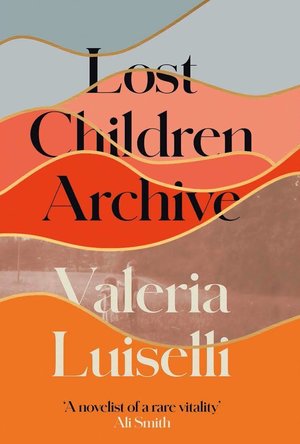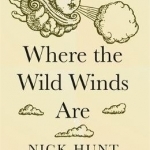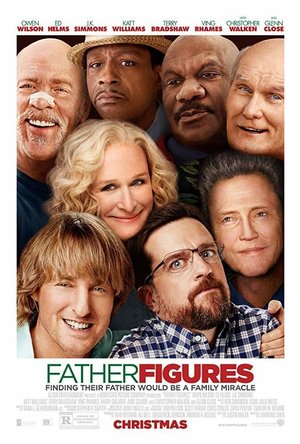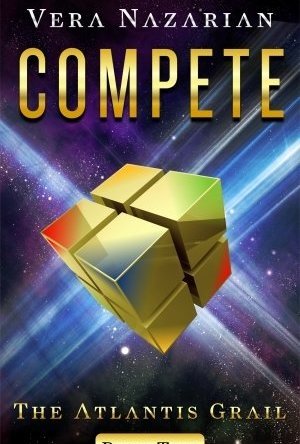
Compete
Book
It’s one thing to Qualify… But do you have what it takes to Compete? With Earth about to be...
Atlantis Young Adult Science Fiction Space
ClareR (5996 KP) rated Lost Children Archive in Books
Sep 2, 2021
The parents are clearly at odds with one another, both wanting to progress their careers in different ways. The father wants to make a soundscape of Apacheria where the last tribes had lived, and the mother wants to help a friend to find her lost children. They had been sent to the US with a coyote (a guide), had been found and sent to a detention centre - but they had subsequently gone missing. The mother discovers that these lone children have been disappearing on this journey for a long time.
The lost children hits close to home when the parents own children go missing.
I really enjoyed this. I loved how the two stories - the journey of the children, and that of the children in the mothers book who are being smuggled from Mexico - were intertwined. I enjoyed the way that the narratives swapped between the mother, the boy and the immigrant children, although the lines often became blurred between reality and the mothers novel.
It is in parts both devastating and informative, particularly in the times that we live in. This isn’t an easy book, but its well worth the read.
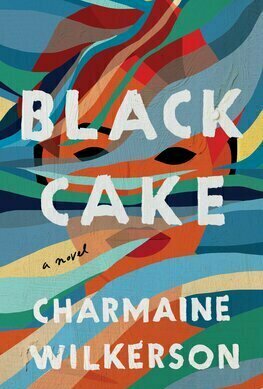
Black Cake
Book
In this moving debut novel, two estranged siblings must set aside their differences to deal with...
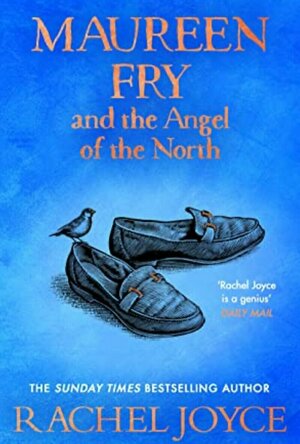
Maureen Fry and the Angel of the North
Book
Ten years ago, Harold Fry set off on his epic journey on foot to save a friend. But the story...
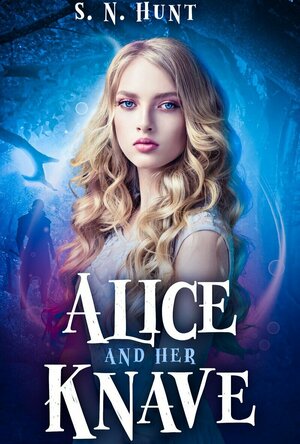
Alice and her Knave (The Madness of Wonderland #1)
Book
It’s a dream, a hallucination…. Alice knew exactly what her future held and was determined to...
Dark Contemporary Fantasy Erotica TRIGGER WARNINGS: Profanity Sex

Prayerful Warrior Mom
Book
⭐️ 2024 Eric Hoffer Grand Prize Award Finalist Unlock the secrets to living a balanced,...

Emanuela Orlandi and Ettore Majorana: Two Italian Mysteries Resolved?
Book
Discover the captivating true stories of Emanuela Orlandi and Ettore Majorana in this compelling...
Hazel (1853 KP) rated Where the Wild Winds are: Walking Europe's Winds from the Pennines to Provence in Books
Sep 26, 2017
From the moment the great storm of 1987 almost blew six-year-old Nick Hunt away, he has had the urge to travel. So many travel books are on the market, it is difficult to produce something new and exciting, but after coming across an interesting map of Europe, Hunt was determined to go on a journey that not many have attempted before. With a map listing the named winds of Europe, Hunt sets off on a quixotic quest to follow the winds.
Beginning in the Pennine Mountains, Nick Hunt takes the reader on a personal journey through the continent as he explores the towns and valleys the winds flow through whilst hoping the elusive tempests will occur so that he can experience them himself. With a mix of euphoria and disappointment, Hunt details his arduous journey providing additional knowledge along the way.
Some winds are more evanescent than others – one, discouragingly, not appearing at all – whereas one is so strong, Hunt witnesses a waterfall being blown upwards. Ignoring the warnings of the locals, Hunt, dead set on completing what he intended to do, takes us on a long walk from Italy to Croatia, a trek through the Alpine valleys of Switzerland, and a final expedition to the south of France.
Wind may seem like an odd topic to write a book about, but the Helm, Bora, Foehn and Mistral are no ordinary breezes. Their violence makes Hunt’s journey a dangerous and daring endeavour and is full of stories about past disasters that have occurred as a result of the strong, temperamental weather.
As well as teaching us about these four winds, Nick Hunt has collected facts and stories about the general areas he passes through. Personal stories of the inhabitants break up Hunt’s narrative, however, myths, legends, history and superstitions frequent the lengthy chapters as much as the winds themselves.
Giving wind a name provides it with a personality, as though it is something tangible that can be met and observed. Nick Hunt notes that artists such as Turner and Constable were interested in the weather and fascinated by the effects the wind had on the surrounding landscape. Another artist that was affected by the weather was Vincent Van Gogh - some of his paintings took place in France in the midst of the powerful Mistral. Just as the wind can be seen in his starry night skies, the scenery in France is evocative of a Van Gogh painting.
The winds do not only affect the lands they blow through, they have a strong impact on the wellbeing of the inhabitants. Some experience physical symptoms such as headaches, nose bleeds, dry skin and so forth, whereas others find themselves growing irritable, depressed and confused. The author himself has the opportunity to undergo the effects of these winds. Hunt also puts forward the suggestion that Van Gogh’s deteriorating mental health was a direct consequence of residing in the path of the Mistral.
From witchcraft to the Greek god Aeolus, there are a number of theories about why these strong winds blow. There are, of course, meteorological explanations, which Hunt attempts to explain, but admits he finds it as baffling as the next person. Regardless of the reason, these winds exist and it is captivating to learn about this aspect of Europe.
Where the Wild Winds Are: Walking Europe’s Winds from the Pennines to Provence is a fantastic, beautifully written book. Nick Hunt’s narrative is so personal that it becomes more than a travel documentation or informative non-fiction. As we read, we really get a sense of the emotions and physical hardship Hunt experienced, yet, at the same time, learn so much about European culture as well as, of course, Europe’s winds. Whether or not you are interested in travelling, this book will take you on a journey you will never forget.
From the moment the great storm of 1987 almost blew six-year-old Nick Hunt away, he has had the urge to travel. So many travel books are on the market, it is difficult to produce something new and exciting, but after coming across an interesting map of Europe, Hunt was determined to go on a journey that not many have attempted before. With a map listing the named winds of Europe, Hunt sets off on a quixotic quest to follow the winds.
Beginning in the Pennine Mountains, Nick Hunt takes the reader on a personal journey through the continent as he explores the towns and valleys the winds flow through whilst hoping the elusive tempests will occur so that he can experience them himself. With a mix of euphoria and disappointment, Hunt details his arduous journey providing additional knowledge along the way.
Some winds are more evanescent than others – one, discouragingly, not appearing at all – whereas one is so strong, Hunt witnesses a waterfall being blown upwards. Ignoring the warnings of the locals, Hunt, dead set on completing what he intended to do, takes us on a long walk from Italy to Croatia, a trek through the Alpine valleys of Switzerland, and a final expedition to the south of France.
Wind may seem like an odd topic to write a book about, but the Helm, Bora, Foehn and Mistral are no ordinary breezes. Their violence makes Hunt’s journey a dangerous and daring endeavour and is full of stories about past disasters that have occurred as a result of the strong, temperamental weather.
As well as teaching us about these four winds, Nick Hunt has collected facts and stories about the general areas he passes through. Personal stories of the inhabitants break up Hunt’s narrative, however, myths, legends, history and superstitions frequent the lengthy chapters as much as the winds themselves.
Giving wind a name provides it with a personality, as though it is something tangible that can be met and observed. Nick Hunt notes that artists such as Turner and Constable were interested in the weather and fascinated by the effects the wind had on the surrounding landscape. Another artist that was affected by the weather was Vincent Van Gogh - some of his paintings took place in France in the midst of the powerful Mistral. Just as the wind can be seen in his starry night skies, the scenery in France is evocative of a Van Gogh painting.
The winds do not only affect the lands they blow through, they have a strong impact on the wellbeing of the inhabitants. Some experience physical symptoms such as headaches, nose bleeds, dry skin and so forth, whereas others find themselves growing irritable, depressed and confused. The author himself has the opportunity to undergo the effects of these winds. Hunt also puts forward the suggestion that Van Gogh’s deteriorating mental health was a direct consequence of residing in the path of the Mistral.
From witchcraft to the Greek god Aeolus, there are a number of theories about why these strong winds blow. There are, of course, meteorological explanations, which Hunt attempts to explain, but admits he finds it as baffling as the next person. Regardless of the reason, these winds exist and it is captivating to learn about this aspect of Europe.
<i>Where the Wild Winds Are: Walking Europe’s Winds from the Pennines to Provence</i> is a fantastic, beautifully written book. Nick Hunt’s narrative is so personal that it becomes more than a travel documentation or informative non-fiction. As we read, we really get a sense of the emotions and physical hardship Hunt experienced, yet, at the same time, learn so much about European culture as well as, of course, Europe’s winds. Whether or not you are interested in travelling, this book will take you on a journey you will never forget.
Gareth von Kallenbach (980 KP) rated Father Figures (2018) in Movies
Jul 11, 2019
Peter Reynolds (Ed Helms) is a man who is disenchanted with his life. He’s a doctor who’s still struggling with his divorce from three years ago, and the prospects of connecting with a son who wants nothing to do with him. His fraternal twin brother Kyle, on the other hand, has the picture-perfect life. Wealthy for being nothing more than a surf bum on the beach and being at the right place at the right time; with a new baby on the way with his long-term (6 month) relationship.
An unlikely event opens Peter’s eyes to the life he has known; a life where the father he believed to be his died of colon cancer, which dictated his career and life choices. The event exposed the lies that their mother had told them and the man they believed to be their father all along, never was.
The realization sends the two brothers on a mission to discover who their real father is, and also discover a bit about themselves along the way. Their journey of discovery will take them from Florida to Massachusetts, and several places in-between. All of this, with of hopes of unraveling the mystery of who their real father is and what role, if any, he could fill in their existing lives.
Ed Helms, portrays his character brilliantly. A man who is kind, good-hearted and responsible. The one who even with all his good intentions, never feels like he is able to get ahead. Owen Wilson plays what I feel is one of his best roles to date, as the ying to Ed Helms yang, the happy-go-lucky, never have a care in the world character. The two have a chemistry on the screen that draws you into their personal struggles with lots of laughter along the way.
The cast of “fathers”, are all brilliantly portrayed, whether it’s Terry Bradshaw portraying himself; J. K. Simons, as the lovable “jerk”; and the always talented Christopher Walken as the family veterinarian Dr. Walter Tinkler. Glenn Close does an absolutely amazing performance as the brother’s mother Helen Baxter.
There are plenty of laughs to be had through the movie, but it’s the amount of heart that the movie shows that really drew me in. As I spoke in the beginning, about expectations, I myself had expectations that the movie would be just another slap-stick comedy, with the characters getting into one hilarious situation after another. While this certainly did happen (it is still a comedy after-all), none of the bits seemed outrageous or done for the sake of shock value. As with most movies that fall into this genre, there are scenes which some may feel provided nothing to the story, and were there simply for adolescent humor or to justify the R rating, but none of these detracted from the film as a whole. I didn’t expect to come out of this movie not only quoting some of the very memorable lines, but also reflecting on where their journey began and where it ended.
Father Figures is much more than a simple comedy, and it’s far more than simply a “who’s your daddy” adventure. It’s a movie about self-discovery and more importantly, the journey to get you there. The folks at Warner Bros. Pictures should be commended on not only the casting of the roles, but for producing a story they can be proud of.
